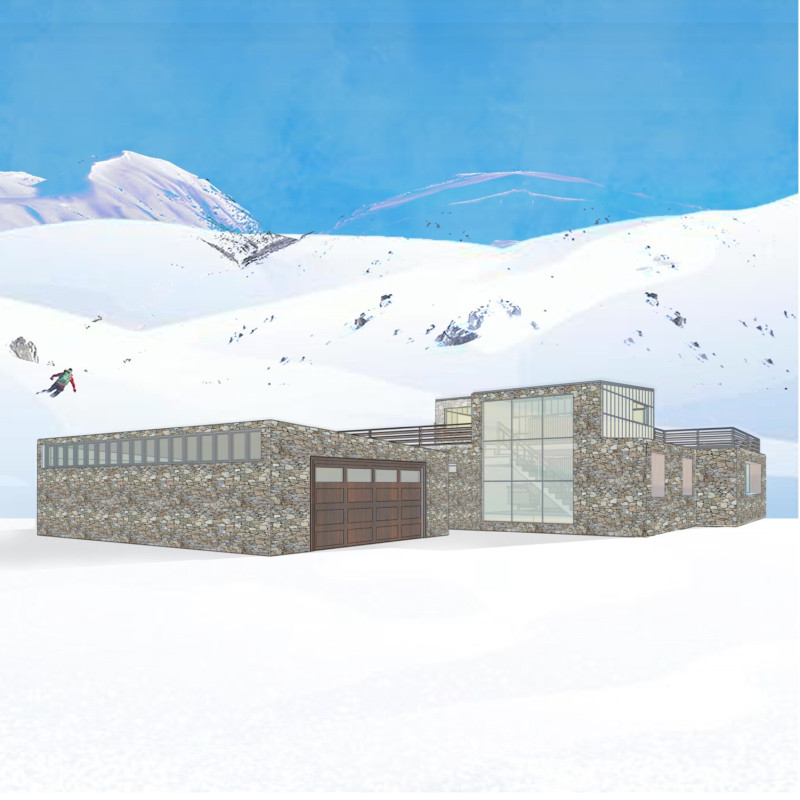5 key facts about this project
At the heart of the design is the concept of creating a seamless interaction between indoor and outdoor spaces. This is achieved through expansive glazing and open floor plans that invite natural light and greenery into the building. The strategic placement of windows not only offers breathtaking views but also ensures that each space is illuminated with natural light throughout the day, promoting a pleasant atmosphere. This emphasis on natural light demonstrates an appreciation for environmental wellness, as it reduces dependency on artificial lighting, thereby lowering energy consumption.
The function of the project is multifaceted, designed to accommodate various activities that define modern living. The layout reflects a careful consideration of how space is utilized, with flows and transitions that support both communal and private interactions. Common areas are designed for social gatherings, while personal spaces maintain a level of intimacy through thoughtful spatial organization. The project's ability to cater to differing needs within a shared environment showcases a sophisticated understanding of the complexities of contemporary living.
Materiality plays a crucial role in grounding the design within its geographical context. The careful selection of materials — including locally sourced brick, steel, and sustainable wood — not only enhances the building's aesthetic but also reflects a respect for the local environment and community craftsmanship. The use of these materials is varied, with brick providing warmth and durability to the facade while steel adds structural integrity and modernity. Sustainable wood elements are employed in both structural and decorative capacities, creating a connection to nature that resonates throughout the design.
Unique design approaches are evident in the project's roofline and external shading devices, which serve both practical and aesthetic purposes. The roof's subtle curves offer a contemporary profile, integrating with the skyline while enhancing its functionality by providing shelter from the elements. Innovative shading devices are implemented to reduce solar gain and glare, emphasizing energy efficiency and the overall comfort of the occupants. This attention to detail in design not only highlights the project’s aesthetic virtues but also demonstrates a commitment to environmental responsibility.
Landscaping is carefully integrated into the design, further promoting the interaction between the architecture and its surroundings. The outdoor spaces are designed as extensions of the interior, featuring landscaped terraces and gardens that encourage outdoor activities and interaction with nature. This approach reinforces the importance of green spaces in urban settings, promoting ecological balance and enhancing the quality of life for the residents.
In terms of technology, the architectural design incorporates smart home features that enhance user experience and operational efficiency. These elements ensure that the building is equipped for the future, integrating systems that allow for energy management and improved connectivity among occupants. Such technological advancements are indicative of an evolving architectural narrative, where design meets innovation.
This project stands as a testament to the evolving landscape of architecture, emphasizing the potential for buildings to enrich the lives of their occupants while being considerate of their environment. The seamless integration of functionality, sustainability, and aesthetics defines the essence of this architectural endeavor. For those interested in a deeper exploration of the design elements that underpin this project, including architectural plans, architectural sections, and architectural ideas, a comprehensive presentation awaits. Engaging with these resources will reveal the thought processes and creative strategies that contribute to the overall narrative and success of this architectural project.


























